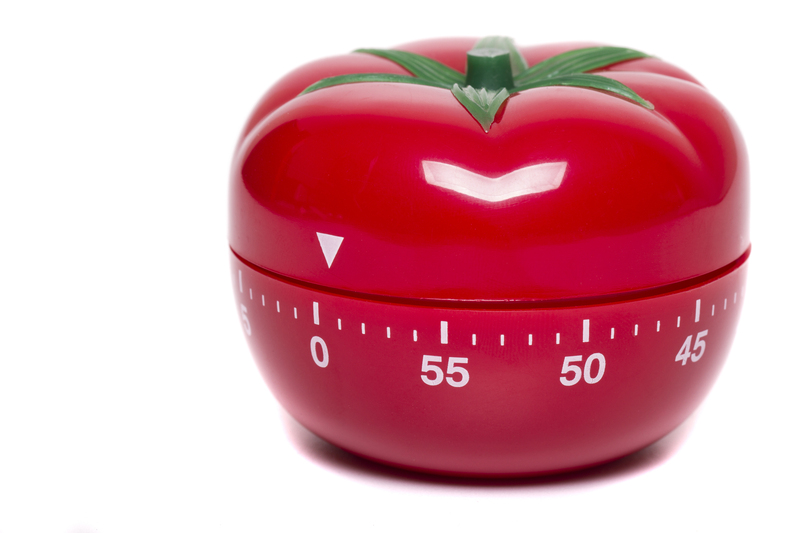Achieving Curtain Cleanliness with Ease
Posted on 22/05/2025
Achieving Curtain Cleanliness with Ease: The Definitive Guide
Curtains are more than just a decorative accent in our homes; they serve essential purposes--filtering light, providing privacy, and enhancing the beauty of our living spaces. However, over time, curtains tend to accumulate dust, odors, and various allergens. That's why achieving curtain cleanliness with ease is vital for a healthy and appealing home environment. In this comprehensive guide, you'll learn everything you need to know about keeping your curtains pristine, fresh, and long-lasting with minimal hassle.

Why Curtain Cleanliness Matters
Curtains can act as magnets for dust, pollen, pet hair, and pollutants, all of which contribute to indoor air quality problems, allergies, and even asthma. Moreover, odorous curtains can make an entire room feel musty and uninviting. Clean curtains, on the other hand, can dramatically improve:
- Indoor air quality
- Allergy symptoms
- The overall ambiance of your home
- Energy efficiency by maximizing sunlight control
- The longevity of your curtain fabrics
When you maintain curtain hygiene with ease, you'll enjoy a fresher, more comfortable, and inviting living space.
Understanding Different Curtain Fabrics & Their Cleaning Requirements
Before diving into curtain washing made easy, it's important to understand that not all curtains are made the same. Each fabric type demands specific care to avoid damage and ensure effective cleanliness.
Common Curtain Fabrics
- Cotton: Durable, washable, but prone to shrinking if not handled correctly.
- Polyester and synthetic blends: Usually machine-washable and easy to maintain.
- Linen: Elegant, but may require gentle washing or professional cleaning due to wrinkling.
- Silk: Luxurious, delicate, and best suited for dry cleaning.
- Velvet: Rich in appearance, needing gentle cleaning or professional services.
- Sheers and lace: Lightweight, often best washed by hand to prevent damage.
Refer to the manufacturer's care label before washing to ensure you follow the best method for effortless curtain care.
How Often Should You Clean Your Curtains?
A commonly overlooked aspect of achieving easy curtain cleanliness is knowing how often to clean them. As a rule of thumb:
- Light cleaning (vacuuming/dusting): Every 2-4 weeks
- Deep cleaning (washing/professional cleaning): Every 3-6 months
Homes with pets, smokers, or residents with allergies may require more frequent cleaning for spotless and hygienic curtains.
Spot Cleaning: The Fast Track to Pristine Curtains
For minor stains or sudden spills, spot cleaning solutions for curtains are your best friend. Here's how you can tackle spots quickly, ensuring your curtains look fresh with minimal effort.
- Act quickly: The sooner you address a spill, the less chance it has to set.
- Blot, don't rub: Use a clean cloth to absorb the stain gently.
- Use mild detergent or fabric-specific cleaner. Test it on a hidden area.
- Rinse with a damp cloth and leave to air dry.
Routine Curtain Maintenance for Everyday Freshness
Implementing a curtain maintenance plan is key to achieving effortless curtain cleaning over time.
Effective Dusting and Vacuuming
- Vacuum Weekly: Use your vacuum cleaner's upholstery attachment. Start from the top and work your way down in overlapping strokes.
- Shake Them Out: If possible, take curtains down every month or so and give them a good shake outdoors.
- Use a Lint Roller: Perfect for removing pet hair or stubborn dust.
Let Your Curtains Breathe
Open your windows on dry days, letting fresh air circulate. This will help eliminate lingering odors and natural allergens trapped in the fabric.
Easy At-Home Washing Techniques
Washing curtains without stress is more accessible than you might think. Here are some fool-proof steps:
- Remove hardware: Take off hooks, rings, and any removable embellishments.
- Shake off dust: Give curtains a good shake before washing.
- Read labels: Always check washing instructions specific to the curtain type.
- Machine wash: Use a gentle cycle with cold water and mild detergent. Avoid bleach unless specified.
- Hand wash: For delicate materials like lace or sheers, gently agitate the curtain in lukewarm water with mild soap.
- Dry: Hang curtains to air dry. Avoid direct sunlight for fabrics that fade. Use a low heat setting for tumble dryer-safe curtains.
- Iron or steam: Iron on the reverse side for smoothness, or use a fabric steamer while hanging for wrinkle removal.
Professional Curtain Dry Cleaning: When and Why
For intricate fabrics or heavy curtains, using a professional curtain cleaner may be the best path to achieving curtain cleanliness with ease. Choose professional dry cleaning for:
- Silk, brocade, velvet, or lined curtains
- Heavily soiled or large draperies
- Specialty window treatments (e.g., swags, pleats, valances)
- When in doubt about colorfastness or fabric integrity
Professional services ensure a deep, safe clean and help extend the life of your curtains.
Tips for Tackling Persistent Odors & Freshening Up Curtains
Eliminating lingering odors is a crucial aspect of easy curtain freshness. Here's how to neutralize undesirable smells:
- Baking Soda: Sprinkle on curtains, let sit for an hour, then vacuum away.
- Fabric Sprays: Use fabric freshening sprays designed for upholstery.
- Sunshine: Occasionally hang curtains outside (weather permitting) for natural deodorization.
- Essential Oils: Add a few drops to a spray bottle with water for a light, natural scent.
Preventing Dust and Allergen Buildup: Smart Strategies
Taking preventive steps is a huge part of achieving curtain cleanliness with ease in your daily routine.
- Use air purifiers in living areas to trap airborne dust and pollen.
- Keep windows closed in high-pollen seasons to minimize particle buildup.
- Choose hypoallergenic or washable curtain fabrics for allergy-prone households.
- Maintain regular home cleaning habits--vacuum, sweep, and dust surrounding areas frequently.
Enhancing the Durability and Look of Your Curtains
A little care goes a long way in making your curtains last. To ensure effortless curtain maintenance and retain visual appeal:
- Avoid harsh cleaners: Always use mild, fabric-safe products.
- Limit Sun Exposure: Prolonged sunlight can fade bright colors and weaken fibers; use sheers in front of heavy drapes or rotate curtains.
- Re-hang promptly: Hang curtains while slightly damp to minimize wrinkles and avoid mildew.
- Iron with care: Always follow the fabric's recommended settings.
Eco-Friendly Curtain Cleaning Tips
If you prefer sustainable solutions, curtain cleaning with minimal environmental impact is entirely achievable:
- Use biodegradable detergents or soap nuts.
- Wash in cold water to save energy and protect fabric fibers.
- Air dry rather than using energy-intensive dryers.
- Repurpose old curtains as cleaning cloths or upcycled creations.
Troubleshooting Common Curtain Cleaning Issues
Even with the best intentions, curtain cleaning can sometimes lead to unexpected challenges. Here's how to address some frequent concerns to ensure hassle-free curtain hygiene:
- Shrinkage: Always check care labels and wash in cold water. Avoid high dryer heat.
- Wrinkling: Hang immediately after washing or use a handheld steamer.
- Color fading: Wash inside out, use mild detergents, and avoid direct sunlight.
- Persistent stains: Pre-treat before washing; for tough stains, consider professional help.
Frequently Asked Curtain Cleaning Questions
- Can I machine wash all curtain types?
No. Heavy, lined, or delicate fabrics may require hand washing or dry cleaning. - What's the easiest way to clean curtains?
Regular vacuuming combined with occasional machine washing (when safe) is the most straightforward method. - How do I prevent mold or mildew on curtains?
Ensure curtains are completely dry before hanging and keep rooms well-ventilated. - Is steaming safe for all curtains?
Most synthetic curtains are steam-safe, but always test an inconspicuous area on natural fibers first.

Quick-Reference Curtain Cleaning Checklist
- Dust or vacuum curtains weekly
- Spot clean stains immediately
- Refer to manufacturer's washing instructions
- Wash (machine or hand) every 3-6 months, as fabric permits
- Hang to dry--and iron or steam if needed
- Consider professional cleaning for delicate or valuable fabrics
Conclusion: Curtain Cleanliness is Easier Than You Think
Achieving curtain cleanliness with ease is perfectly possible for every homeowner, whether you have sheer panels, heavy drapes, or elegant valances. By following a blend of regular maintenance, spot cleaning tips, proper washing, and some savvy household habits, your curtains can stay spotless and fresh with minimal time and effort.
If you incorporate these easy cleaning routines and preventive strategies, you'll not only improve the look and feel of your home, but also ensure a healthier living space for you and your loved ones. Now, embrace the journey toward curtain hygiene made easy--and enjoy the fresh, vibrant results!



